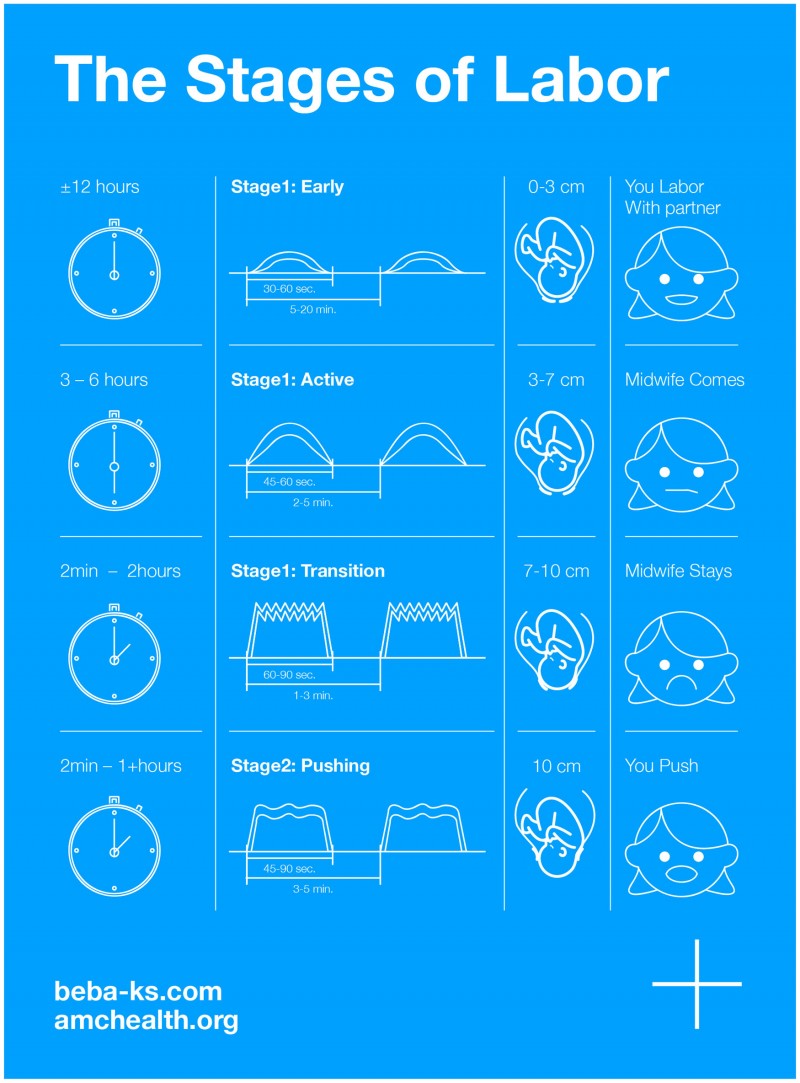When the contractions of labor begin, the walls of your uterus start to contract. They are stimulated by the release of hormones (oxytocin). The contractions cause the cervix to widen and begin to open. As labor progresses the amniotic sac can rupture causing a slow or a fast gush of fluids (breaking of water), and labor will usually begin within 24-hours. As contractions become closer and stronger the cervix will gradually start to open (dilate). As the labor progresses, pain increases, but your body naturally helps with this by releasing hormones called endorphins. High levels of endorphins are known to be more effective than medications. To encourage your body to make these hormones, which makes labor easier, stay relaxed. We show you how here.
False labor, also called Braxton Hicks contractions, is a painless tightening in the lower abdomen. You can start feeling these Braxton Hicks contractions in your second or third trimester of pregnancy, but they typically get stronger in the last month of pregnancy. They do not mean you are going into labor; it is just your body’s way of getting prepared. There are a few signs that differentiate true labor from false labor:
|
REAL Labor |
FALSE Labor |
|
|
|
|
|
|
|
|
Here are 12 signs that labor might be coming soon. You could still be a few weeks or a few days away from labor, but they do show things are moving in the right direction:
Labor isn’t like what you see on TV. You aren’t necessarily in pain and screaming, sometimes water doesn’t break until after the baby comes out and the baby almost never pops out shortly after labor starts. For most women, especially first-time mothers, active labor takes about 6-8 hours, but can go up to 18 hours or more. Every woman's experience is different. It might help you to understand the distinct stages of labor and how long each typically takes:
Stage 1 (consists of three phases):
Stage 2 – involves pushing and the birth of your baby. The average time for first-time mothers is one hour.
Stage 3 – is delivery of the placenta, usually within 5-30 minutes after baby is born.

It depends on each individual situation: pregnancy complications/high risk, first baby, distance from hospital, and personal preference all affect when you should arrive at the hospital. You do not need to go to the hospital at the first sign of contractions, and in fact it is better to stay at home in early labor as you will be much more comfortable.
You can have your husband help time your contractions and go when they are regularly at five minutes apart unless you live a long distance from the hospital, in which case you should leave sooner. In any case, it’s always best to call your doctor to check when you should go to the hospital. Other reasons (danger signs) you should go to the hospital immediately is if:
We offer free classes across Kosovo at our Mom's Class Centers (Women’s Health Resource Centers).
Find your local class here.
Free classes